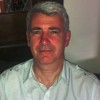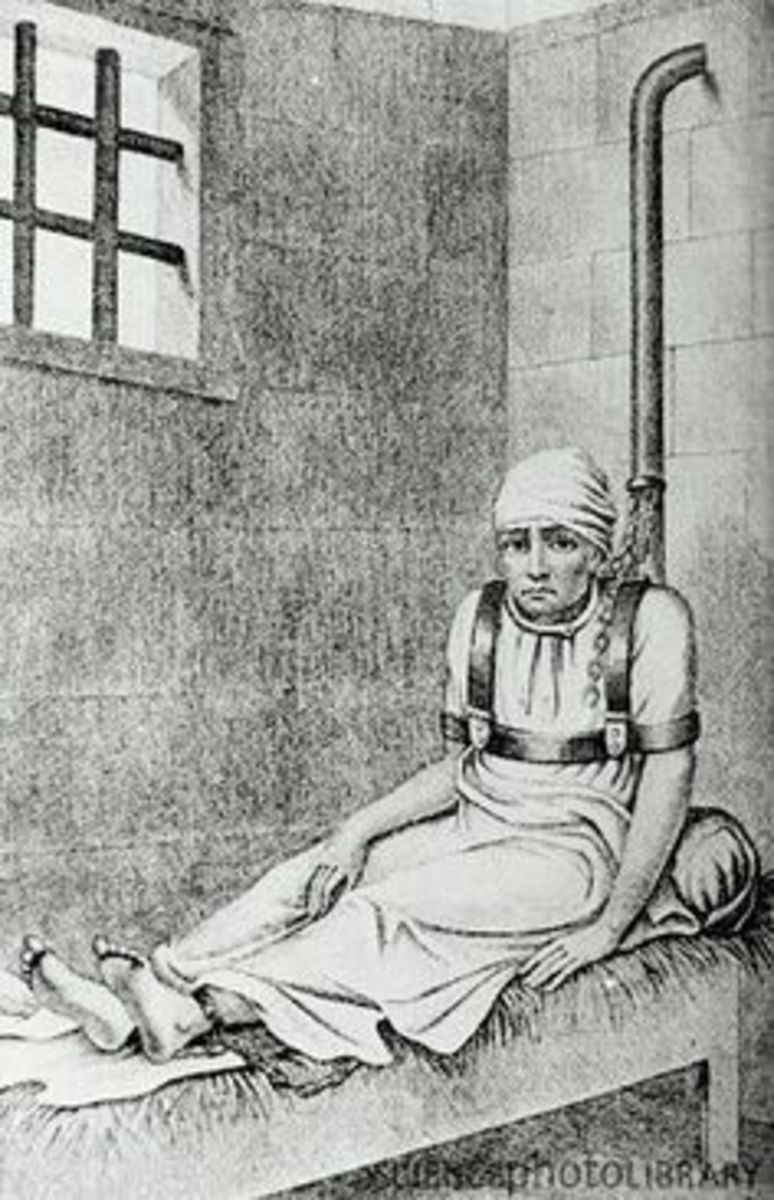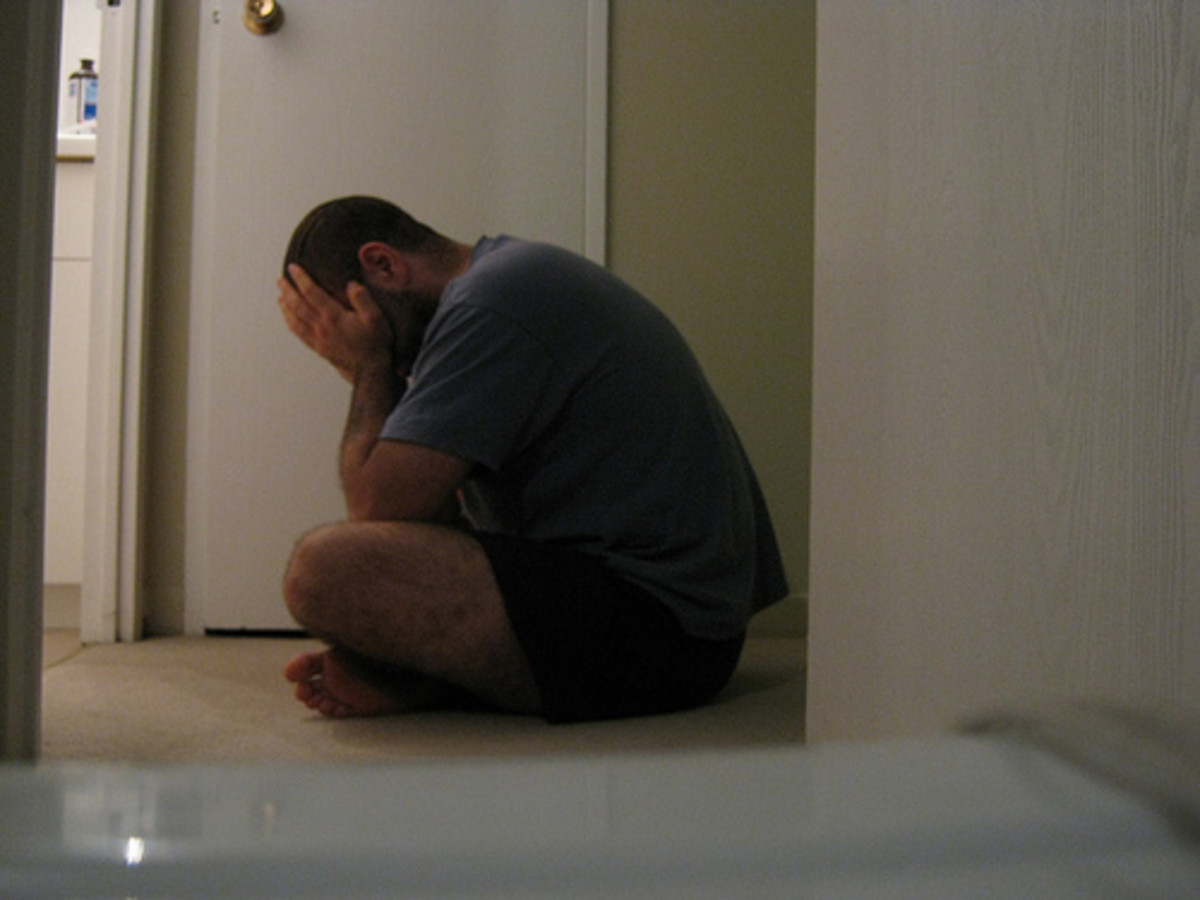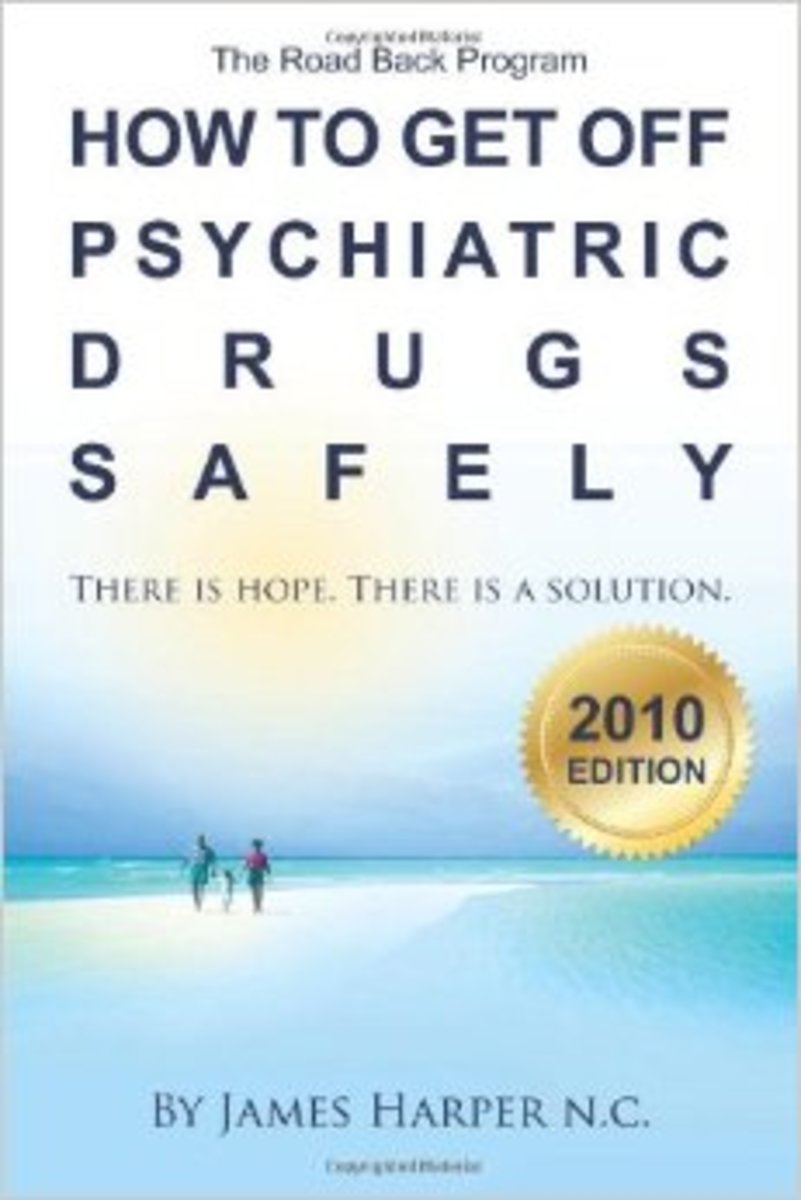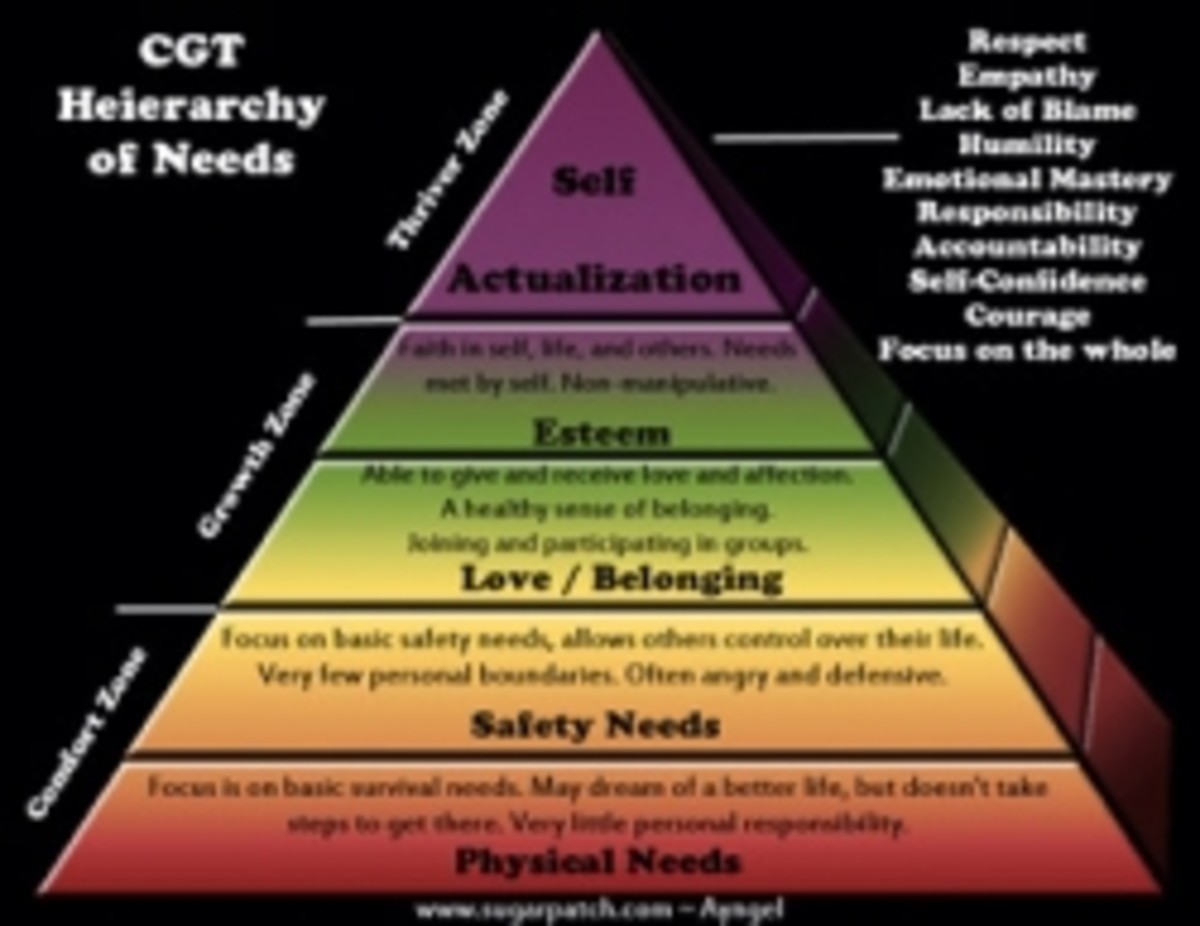Anti-Psychotic Drugs: 10 Things You Should Know About Pills for Delusions and Hallucinations
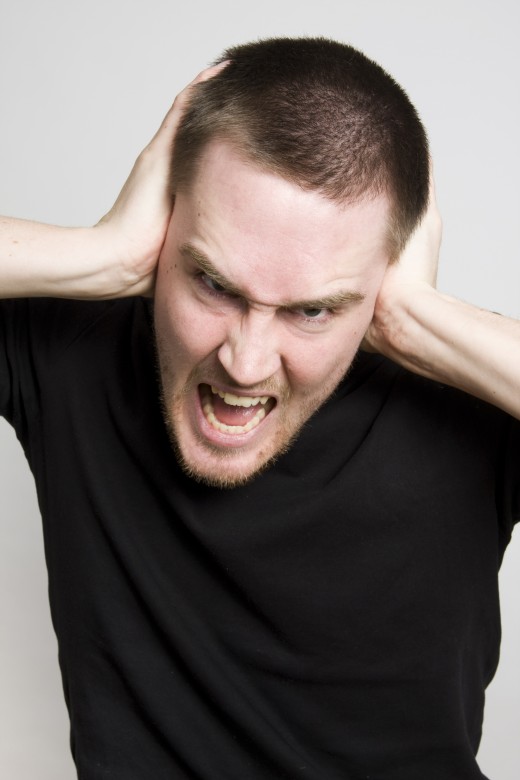
Anti-psychotics (also known as neuroleptics and major tranquillisers) are a broad group of drugs routinely used within psychiatric services to treat the psychotic symptoms of what psychiatrists refer to as 'schizophrenia'. The most common psychotic symptoms are auditory hallucinations (hearing voices that others cannot hear), delusions (fixed beliefs held with total conviction in the absence of evidence to support them) and thought disorder (where a person’s thoughts seem jumbled and confused).
Standard textbooks of psychiatry typically claim that the development of anti-psychotic drugs revolutionised the treatment of mental illness and was pivotal in promoting care in the community by allowing the closures of the huge and soulless psychiatric asylums. Complementing these lofty assertions, the pharmaceutical industry spends vast amounts of money advertising their products, often claiming success rates in excess of that suggested by the scientific evidence.
If a person is unfortunate enough to experience distressing psychotic symptoms, and seeks help from psychiatric services, he will almost certainly be prescribed an anti-psychotic drug. But what is the truth about these chemicals? What follows are the facts about these medications. In providing this information it is hoped that it will help psychosis-sufferers to make an informed decision as to whether or not to voluntarily take anti-psychotic drugs.
1. Chlorpromazine: the first anti-psychotic drug
The original research effort that ultimately led to the discovery of chlorpromazine, the first anti-psychotic, was concerned with striving to develop a drug that produced more sedation and indifference in patients undergoing surgery. In 1950, a chemist named Paul Charpentier developed a number of substances for this purpose, the most effective being a compound he named RP4560 (chemical name, chlorpromazine). A surgeon, Henri Laborit, trialled it as an anaesthetic booster and found it worked well in calming patients during operations and reducing the risk of shock. Further research around the same time reported that chlorpromazine made rats indifferent to pain.
The transition to use with mentally-ill patients was conducted by two psychiatrists, Jean Delay and Pierre Deniker, who published a study in 1952 where they injected chlorpromazine into 38 psychotic patients residing in a Paris hospital. They reported marked improvements in psychotic symptoms and emotional behaviour. Other successful trials followed, and by the mid 1950s chlorpromazine was increasingly used in the USA and other western nations for the treatment of psychosis and mania. Chlorpromazine subsequently spawned the development of many other anti-psychotic medications (see next section).
2. The distinction between typical and atypical anti-psychotic drugs
Anti-psychotic drugs can be divided into two broad categories, typical and atypical. Typical anti-psychotics, of which chlorpromazine was the first, are also referred to as 'first generation' and were developed from the 1950s onwards. A list of the more common typical anti-psychotic medications, along with their trade names, is given in Table 1.
Typical anti-psychotics are believed to have their effects by blocking dopamine receptors in the brain. Dopamine is one of a group of chemicals called neurotransmitters that allow brain cells to communicate with each other. The specific roles of dopamine include muscle movement, motivation and the mediation of feelings of satisfaction. There is some evidence that too much dopamine activity in parts of the brain can result in hallucinations, delusions and thought disorder. By blocking the dopamine receptors, and thereby reducing dopamine activity, psychotic symptoms may be reduced.
Typical anti-psychotic drugs
Name of drug
| Trade name
|
|---|---|
Chlopromazine
| Largactil, Thorazine
|
Haloperidol
| Haldol, Serenase
|
Droperidol
| Droleptan, Inapsine
|
Pimozide
| Orap
|
Trifluoperazine
| Stelazine
|
Sulpiride
| Dolmatil
|
Fluphenazine
| Prolixin, Permitil
|
Perphenazine
| Trilafon
|
Thioridazine
| Mellaril
|
Promazine
| |
Clopenthixol
| Clopixol, Sordinol
|
Flupenthixol
| Depixol, Fluanxol
|
The atypical anti-psychotics first emerged in the 1990s and are sometimes referred to as 'second generation'. A list of the more common atypical anti-psychotic medications, with their corresponding trade names, is given in Table 2.
Although atypical anti-psychotics also block dopamine receptors, they do it to a lesser degree than the older drugs. In addition, they target other neurotransmitters in the brain such as serotonin.
Atypical anti-psychotic drugs
Name of drug
| Trade name
|
|---|---|
Amisulpuride
| Solian
|
Aripiprazole
| Abilify
|
Clozapine
| Clozaril
|
Olanzapine
| Zyprexa
|
Risperidone
| Risperdal
|
Sertindole
| Serdolect
|
Zotepine
| Zoleptil
|
Quetiapine
| Seroquel
|

3. Short-term effectiveness
A series of research studies has demonstrated that anti-psychotic drugs reduce the positive symptoms (hallucinations, delusions, thought disorder) more effectively than a placebo. In other words, if you take two groups of people experiencing a broadly equivalent degree of psychotic symptoms and give one group anti-psychotic medication and the other group an inert pill (without participants in the research knowing whether they were receiving the anti-psychotic or the placebo) those receiving the active drug will, on average, report a greater improvement in their psychotic symptoms.
Although psychiatrists and drug company sales representatives typically claim that this beneficial effect on psychotic symptoms is a direct result of the medication reversing a specific biochemical imbalance (in the same way that, for example, insulin treats diabetes) the evidence does not support this assertion. Indeed, anti-psychotic drugs may be no more effective than anti-anxiety drugs such as diazepam (valium) in alleviating the positive symptoms of 'schizophrenia'. To date, seven research studies have directly compared these two groups of drugs in the treatment of psychosis; two studies found in favour of the anti-psychotic drugs, a further three studies found in favour of the anti-anxiety drugs, and two were inconclusive (1). Therefore, the short-term benefits of anti-psychotics may be entirely due to their sedating effect.
Further doubt is cast upon the extent of the benefit associated with anti-psychotic medication when one considers some other research findings. It is known that at least one in three psychosis-sufferers can improve without medication (2). Also, it is well established that another third do not respond at all to anti-psychotic drugs – commonly referred to as being 'treatment-resistant'. It follows, therefore, that only one in three people experiencing psychotic symptoms will potentially benefit as a direct result of the medication.
4. Clozapine: the most effective anti-psychotic
Patients experiencing psychotic symptoms who do not respond to other anti-psychotic medications (the 'treatment-resistant' group referred to above) are commonly prescribed a drug called Clozapine.
Clozapine was the first atypical anti-psychotic drug to be developed but it was withdrawn voluntarily by the manufacturer in 1975 when it was shown in some patients to cause a life- threatening blood disorder, called agranulocytosis, involving a pronounced drop in the number of white blood cells thereby leaving the person unable to fight infections. In the late 1980s, it was demonstrated to be more effective than other anti-psychotics (3) and was approved for use with treatment-resistant 'schizophrenia'. The recipients are required to have regular blood tests so as to check for early signs of agranulocytosis.
5. Side effects of typical anti-psychotics
Common side-effects of typical anti-psychotics include:
· muscle stiffness
· shakiness
· restlessness (akathisia)
· sluggishness, reduced motivation
· sexual problems
· irregular heart-beat (arrhythmias)
· dry mouth
· constipation
· blurred vision
Chlorpromazine also renders the patient photosensitive and much more likely to burn if exposed to direct sunlight.
A rare, but very serious, short-term side-effect of typical anti-psychotics is the development of neuroleptic malignant syndrome. This disorder emerges in 1 in 200 people who start taking anti-psychotics and is characterised by high temperature and muscle-rigidity. It is fatal in 20% of cases.
With longer term use other side-effects may develop including bone-wasting (osteoporosis) and breast-growth and lactation in men. Particularly concerning is the risk of a movement disorder called tardive dyskinesia, characterised by facial twitches, involuntary tongue movements and lip-smacking. These symptoms can persist even after the drug is stopped and may be permanent. The incidence of tardive dyskinesia (commonly under-reported by psychiatric organisations) is at least 20% of long term typical anti-psychotic users(4).
Along with the movement disorders, some mental deterioration may also occur; Amercian psychiatrist, Peter Breggin, has referred to this intellectual decline as a dementia-like state. Indeed, several studies involving post-mortem examination of brain-tissue reported that the degree of brain shrinkage corresponds to the cumulative amount of anti-psychotics ingested (5)(6)(7)(8). Despite this evidence that their prescribed medications cause brain decay, biological psychiatrists persist in their attempts to explain away these findings on the basis of some assumed underlying 'schizophrenic' disease process.
6. Side effects of atypical anti-psychotic drugs
The atypical anti-psychotics have many of the same side-effects as the typical drugs, including tardive dyskinesia (despite initial claims to the contrary by the pharmaceutical companies) - risperidone, in particular, is potent in triggering these type of symptoms. Additional common side-effects with the atypical anti-psychotics include:
- over-sedation
- weight gain
- sexual problems
- diabetes
- raised cholesterol
As already mentioned, clozapine is also associated with agranulocytosis (a potentially lethal blood disorder) as well as causing excess salivation, constipation and an increased risk of epilepsy.
Evidence for brain shrinkage with the atypicals is inconsistent, although clozapine may be particularly toxic in this regard (9).
7. The misuse of anti-psychotic drugs
Predictably, following the discovery of chlorpromazine in the early 1950s, the rate of anti-psychotic prescribing has risen exponentially. Within 12-months of chlorpromazine becoming available, two million Americans were receiving it; by 1970, about 250 million people worldwide had taken anti-psychotic medication (10). In the United Kingdom, Department of Health official figures indicate that the number of prescriptions for anti-psychotic drugs rose from 2.3 million in 1970 to 5.7 million in 2001.
Such pronounced increases in the use of anti-psychotics would be less alarming if all the recipients were adults suffering with hallucinations, delusions and thought disorder (the patient population for which the drugs were intended). The evidence indicates that this is not the case. Instead, anti-psychotic drugs have been used indiscriminately across a number of populations, particularly as a way of subduing people who are agitated or aggressive. Thus, people with learning difficulties in residential care may commonly receive them, despite the likelihood that anti-psychotics may further impair their mental functioning (11). Young people have also been targeted, particularly those from poorer backgrounds; the number of American children receiving anti-psychotics doubled between 1987 and 1996, with youths from poorer families outnumbering those from more affluent backgrounds by a ratio of almost six-to-one (12).
In addition to anti-psychotic use extending to young people and those with learning deficits, older people have also increasingly been recipients. A study in the United Kingdom found that 25% of elderly nursing home residents were being prescribed anti-psychotic drugs, usually for problems such as wandering or 'uncooperation' (13).
Encroachment of anti-psychotic drugs into non-psychotic populations is a cause for concern, given their side-effects and lack of evidence to suggest benefits with these groups of patients. It is reasonable to conclude that this expansion is testimony to nothing other than the effectiveness of the marketing strategies of the pharmaceutical industry.
8. Withdrawal from anti-psychotic drugs: the discontinuation effect
The human body has a remarkable capacity to return itself to balance. If a person’s biochemistry is artificially altered by the addition of a drug, the body will try to compensate to return the inner biology to the status quo. It is for this reason that people taking anti-psychotics typically experience withdrawal symptoms when they stop taking the drug, particularly if they have been on the drug for a long time and stop abruptly.
As described in section 2 (above), anti-psychotics have their effects by blocking receptors in our brain cells that allow chemical messengers to communicate between one cell and another. Most commonly, they block dopamine receptors. The brain responds to this blockage by producing more dopamine receptors so that withdrawal of the drug leaves the nervous system overactive, striving to increase dopamine activity. Hence, some rebound psychotic symptoms are likely to occur when anti-psychotics are stopped, a reaction referred to as a discontinuation effect. Other withdrawal symptoms include insomnia, nausea, anxiety, agitation and diarrhoea. This discontinuation effect can often be misinterpreted as a 'return of the illness' and (as described in the next section) may make research into the benefits of long-term anti-psychotic use difficult to interpret (14).
9. Long-term effectiveness
For patients who have suffered a psychotic episode, and acquired the diagnostic label 'schizophrenia', psychiatrists almost always recommend long-term use of anti-psychotic drugs to prevent relapse for those who have recovered or to stop deterioration in residual symptoms. This widespread recommendation is based on the findings of studies that have shown superior outcomes for those patients who remain on anti-psychotics compared to those who are switched to an inert substance (a placebo). There are, however, two major flaws to these studies that as yet make it unwise to draw firm conclusions about the appropriateness of long-term anti-psychotic use.
Firstly, many of the subjects who are switched to placebo will have been taking anti-psychotics for a long time and their abrupt termination will most likely produce a strong discontinuation effect. Thus, the main reason for deterioration in the placebo group might be drug-withdrawal rather than a worsening of the psychotic disorder per se. This possibility is almost completely ignored in the research, deterioration always being seen as a relapse in the 'schizophrenic' illness.
Secondly, most of the research suggesting the benefits of long-term anti-psychotic use have deployed 'relapse' as the sole outcome measure. Other important, quality of life indicators (general well-being, ability to work, rewarding relationships) have been ignored when comparing the progress of people continuing to take the anti-psychotics with those who have ceased taking the drugs. This failure to consider quality of life outcomes seems an important omission, particularly given the side-effects of the medication.
In conclusion, although long-term anti-psychotic use may in time be demonstrated to be beneficial for some psychosis-sufferers, as things stand, the research has not yet established whether on-going medication use is better than not taking them from the point of feeling well.
10. Anti-psychotic drugs suppress all brain activity
The traditional psychiatric view is that anti-psychotics have a specific action that reverses the biochemical imbalance thought to underpin 'schizophrenic' illness. An alternative viewpoint, one supported by the research evidence, is that anti-psychotic drugs have a global effect by generally slowing down all mental activity.
The original name for an anti-psychotic drug was 'neuroleptic' based on a Greek word literally meaning 'seize hold of the nervous system'. Such a definition tallies with the results of studies where non-psychotic volunteers have taken an anti-psychotic and subsequently described their experiences. For example, when two Israeli doctors were injected with haloperidol they described being unable to read, use the telephone or carry out basic household tasks unless they were told to do so (15). This general lack of initiative as a consequence of taking anti-psychotic drugs has been further demonstrated by subsequent studies, volunteer recipients having slower reaction times, impaired learning, poorer coordination and less capacity to experience joy and sadness (16)(17).
It therefore appears likely that anti-psychotic drugs achieve a beneficial effect on hallucinations and delusions via a general slowing of all brain activity, in much the same way that a hefty dose of alcohol might cure a person’s shyness. For someone tormented by distressing voice-hearing and delusions this general suppression of psychotic symptoms may be highly desirable, at least in the short-term. But it would be wrong to assert, as most psychiatrists do, that these benefits are the direct consequences of anti-psychotics treating a specific biochemical imbalance.
References
1. Wolkowitz, O.M. and Pickar, D. (1991). Benzodiazepines in the treatment of schizophrenia: A review and re-appraisal. American Journal of Psychiatry, 148(6), 714 – 726.
2. Lehtinen, V. et al. (2000). Two year outcome in first-episode psychosis treated according to an integrated model. Is initial neuroleptilisation always needed? European Psychiatry,15(5), 312-320.
3. Moncrieff, J. (2003).Clozapine versus conventional anti-psychotic drugs for treatment-resistant schizophrenia: A re-examination. British Journal of Psychiatry, 183, 161 - 166.
4. Jeste, D.V. et al. (1995). Risk of tardive dyskinesia in older patients. Archives of General Psychiatry 52(9), 756-765.
5. Cahn, W. et al. (2002). Brain volume changes in first-episode schizophrenia: a 1-year follow-up study. Archives of General Psychiatry, 59, 1002 – 10.
6. Dorph-Petersen, K.A. et al. (2005). The influence of chronic exposure to antipsychotic medications on brain size before and after tissue fixation: a comparison of haloperidol and olanzapine in macaque monkeys. Neuropsychopharmacology, 30, 1649 – 61.
7. Arnone, G. et al. (2009). Magnetic resonance imaging studies in bipolar disorder and schizophrenia: meta-analysis. British Journal of Psychiatry, 195, 194 – 201.
8. Ho, B.C. et al. (2011). Long term antipsychotic treatment and brain volumes: a longitudinal study of first-episode schizophrenia. Archives of General Psychiatry, 68, 128 – 37.
9. Gil-Ad, I. et al. (2001). Evaluation of the neurotoxic activity of typical and atypical neuroleptics: relevance to iatrogenic extrapyramidal symptoms. Cell Molecular Neurobiology, 21, 705 - 16.
10. Jeste, D.V. & Wyatt, R.J. (1979). In search of treatment for tardive dyskinesia. Schizophrenia Bulletin, 5, 251 – 293.)
11. Johnstone, L. (2000). Users and Abusers of Psychiatry: A critical look at psychiatric practice (2nd edition). Routledge.
12. Zito, J.M. et al., (2003). Psychotropic practice patterns for youth. Archives of Pediatric and Adolescent Medicine 157, 17-25.
13. McGrath, A. and Jackson, G. (1996).Survey of Neuroleptic Prescribing in Residents of Nursing Homes in Glasgow. British Medical Journal 312,611-612.
14. Moncrieff, J. (2009). A Straight Talking Introduction to Psychiatric Drugs. PCCS Books, Ross-on-Wye.
15. Belmaker, R.H. & Wald, D. (1977).Haloperidol in normals. British Journal of Psychiatry 131,222-223.
16. McClelland et al., 1990. A comparison of central nervous system effects of haloperidol, chlorpromazine and sulpiride in normal volunteers. British Journal of Clinical Psychopharmacology.30(6), 795 – 803.
17. Ramaekers, J.G. et al. (1999).Psychomotor, cognitive, extra-pyramidal and affective functions of healthy volunteers during treatment with an atypical (amisulpuride) and typical (haloperidol) anti-psychotic. Journal of Clinical Psychopharmacology 19(3),209-221.
